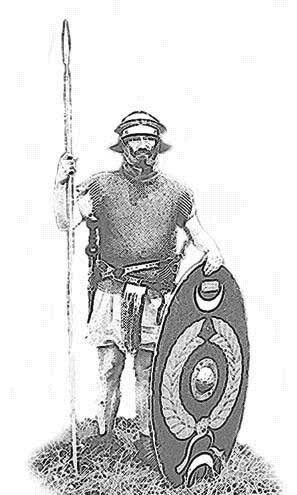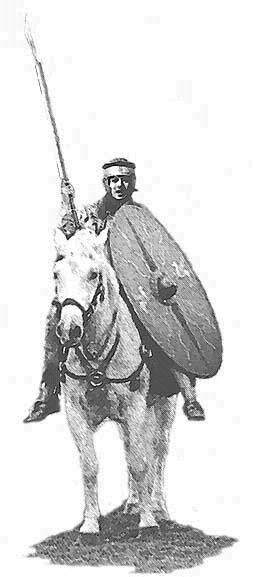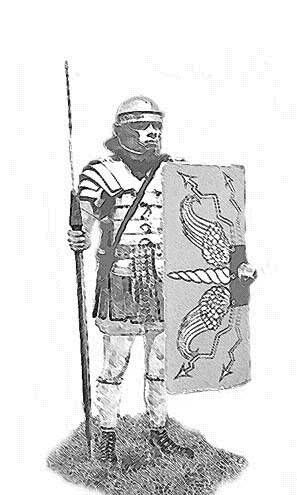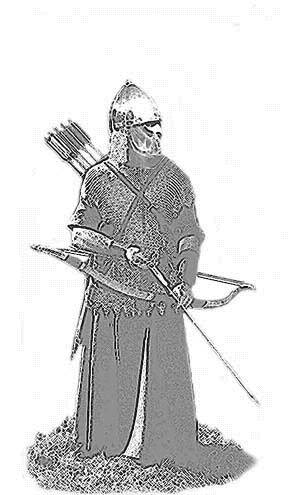10 Contubernia 1 Century 80 Men
2 Centuries 1 Maniple 160 Men
6 Centuries 1 Cohort480 Men
10 Cohorts + 120 Horsemen1 Legion 5240 Men *
*1 Legion = 9 normal cohorts (9 x 480 Men) + 1 "First Cohort" of 5 centuries (but each century at the strength of a maniple, so 5 x 160 Men) + 120 Horsemen = 5240 Men
Battle Order
Front Line
|
5th
Cohort
|
4th Cohort
|
3rd Cohort
|
2nd Cohort
|
1st Cohort
|
|
10th
Cohort
|
9th Cohort
|
8th Cohort
|
7th Cohort
|
6th Cohort
|
The first cohort of any legion were its elite troops.
So too the sixth cohort consisted of "the finest of the young men", the
eighth contained "selected troops", the tenth cohort "good troops".
The weakest cohorts were the 2nd, 4th, 7th and the 9th cohorts.
It was in the 7th and 9th cohorts one would expect to find recruits in
training.
|
Auxiliary
Infantryman
|
 |
An auxiliary infantryman of the the first century AD. His armour and equipment was decidedly inferior to that of the legionary
Syrian Auxiliary Archer |
The eastern provinces were particularly known for their archers, using powerful composite bows. Syrian archers should serve across the empire as auxiliary forces.
|
Cavalryman
|
A typical Roman cavalryman, armed with large oval
shield and lance, wearing a helmet and chain mail, he rode without stirrups.

|
Imperial
Legionary
|
A legionary wearing the famous banded armour, the
lorica
segmentata, and the typical imperial 'Gallic' helmet. Also he bears
the famous large square shield.
|
Centurion
|
The centurion's armour varied widely, perhaps it
was even a matter of individual choice. The centurion depicted wears chain
mail. However, the horsehair crest across his helmet, along with his cape,
was what made him easily recognizable by everyone as a officer of considerable
rank.
Note also the vine rod he holds in his hand. A further insignia
of his rank and one he would happily use to beat unruly soldiers with to
enforce discipline.


